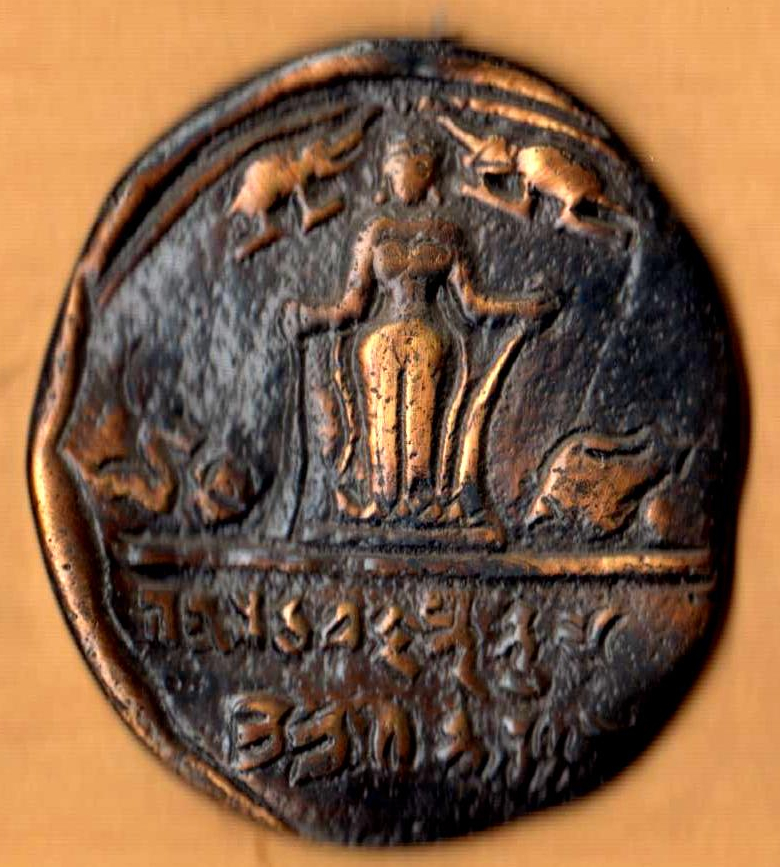|
Gayadhara
Gayadhara (d. 1103 CE) was an 11th century History of Buddhism in India, Indian Buddhist master and scholar and one of teachers who spread the Lamdre doctrine in Tibet from which he was instructed by the teacher, Virupa. He was also the teacher of the Tibetan monk, Drogmi. He is considered to be one of the more eccentric figures in Indian Buddhist history. Life The scholars, Rahul Sankrityayan and K. P. Jayaswal, both state that Gayadhara was born in Vaishali (ancient city), Vaishali in the modern state of Bihar in India. The twelfth-century Tibetan writer, Jetsun Dragpa Gyaltsen writes that Gayadhara belonged to the Kayastha caste of scribes and the sixteenth-century writer, Khyentse Wangchuk, states that his family worked in service of a king of Candrarūpa. The Kayastha caste that Gayadhara belonged to had produced numerous other Vajrayana, tantric masters. Tibetan writers, like Pawo Tsuglag Threngwa, also make it clear that Gayadhara was a lay practitioner (Upāsaka) and not a ... [...More Info...] [...Related Items...] OR: [Wikipedia] [Google] [Baidu] |
Lamdre
Lamdré is a meditative system in Tibetan Buddhism rooted in the view that the result of its practice is contained within the path. The name "lamdré" means the "path" () with its fruit ). In Tibet, the lamdré teachings are considered the ''summum bonum'' of the Sakya (Tibetan Buddhist school), Sakya school. History According to traditional accounts, the lamdré teachings were originally bestowed upon Virupa, Virūpa, an Indian Śrāmaṇera, monk, by the tantric deity Nairatmya, Nairātmyā. By practicing the instructions given to him, Virūpa is said to have realized enlightenment. Hagiographical accounts of Virūpa's exploits record outrageous events, including binge drinking, seducing women, and destroying non-Buddhist (Skt. ''tīrtika'') religious sites. Davidson suggests that this depiction shows the laxity of Buddhist morals during the Indian medieval period, but Wedemeyer suggests that the behavior shown in esoteric Buddhist hagiographies is intentionally scandalous, fo ... [...More Info...] [...Related Items...] OR: [Wikipedia] [Google] [Baidu] |
Kayastha
Kayastha (or Kayasth) denotes a cluster of disparate Indian communities broadly categorised by the regions of the Indian subcontinent in which they were traditionally locatedthe Chitraguptavanshi Kayasthas of North India, the Chandraseniya Kayastha Prabhus of Maharashtra, the Bengali Kayasthas of Bengal and Karan (caste), Karanas of Odisha. All of them were traditionally considered "writing castes", who had historically served the ruling powers as administrators, ministers and record-keepers. The earliest known reference to the term ''Kayastha'' dates back to the Kushan Empire, when it evolved into a common name for a writer or scribe. In the Sanskrit literature and Epigraphy, inscriptions, it was used to denote the holders of a particular category of offices in the government service. In this context, the term possibly derived from ('principal, capital, treasury') and - ('to stay') and perhaps originally stood for an officer of the royal treasury, or revenue department. Ove ... [...More Info...] [...Related Items...] OR: [Wikipedia] [Google] [Baidu] |
Drogmi
Drogmi (Drogmi Lotsāwa Śākya Yeshe) (c. 992–1064) transmitted the tantric system "Path and Fruit" (Lamdré) which came to be the central esoteric tradition of the Sakya school of Tibetan Buddhism. Drogmi was a famous scholar and translator who had studied at the Vikramashila monastery directly under Naropa, Ratnākaraśānti, Vāgīśvarakīrti and other great panditas from India for twelve years. He is famous for his beard. He was also initiated into the Lamdre school by the Indian master, Gayadhara Gayadhara (d. 1103 CE) was an 11th century History of Buddhism in India, Indian Buddhist master and scholar and one of teachers who spread the Lamdre doctrine in Tibet from which he was instructed by the teacher, Virupa. He was also the teacher of .... References Sakya Buddhists Tibetan Buddhism Monks of Vikramashila {{Buddhism-stub ... [...More Info...] [...Related Items...] OR: [Wikipedia] [Google] [Baidu] |
Vaishali (ancient City)
Vaishali, Vesali or Vaiśālī was an ancient city located north of Patna in present-day Bihar, India. It is now a Buddhist pilgrimage site that also contains two important stupas of the Buddha,Robert Beer, ''The Encyclopaedia of Tibetan Symbols and Motifs''. Boston: Shambhala, 1991. the '' Relic Stupa of Vaishali'' and the ''Stupa of Complete Victory''. As an archaeological site it forms part of the Vaishali District in Tirhut Division. It was the capital city of the Vajjika League of Vrijji mahajanapada, considered one of the first examples of a republic that dates from c.6th century BCE. Gautama Buddha preached his last sermon before his mahaparinirvana in , and Vaishali is also home to two important stupas directly related to the Buddha, the Relic Stupa of Vaishali, which is said to contain the ashes of the Buddha, and the ''Stupa of Complete Victory'' that represents the prolongation of the Buddha's life by three months when he was eighty years old. In 383 BCE the Secon ... [...More Info...] [...Related Items...] OR: [Wikipedia] [Google] [Baidu] |
North Eastern India
Northeast India, officially the North Eastern Region (NER), is the easternmost region of India representing both a geographic and political administrative division of the country. It comprises eight states—Arunachal Pradesh, Assam, Manipur, Meghalaya, Mizoram, Nagaland and Tripura (commonly known as the "Seven Sisters"), and the "brother" state of Sikkim. The region shares an international border of 5,182 kilometres (3,220 mi) (about 99 per cent of its total geographical boundary) with several neighbouring countries – it borders China to the north, Myanmar to the east, Bangladesh to the south-west, Nepal to the west, and Bhutan to the north-west. It comprises an area of , almost 8 per cent of that of India. The Siliguri Corridor connects the region to the rest of mainland India. The states of North Eastern Region are officially recognised under the North Eastern Council (NEC), constituted in 1971 as the acting agency for the development of the north eastern states. ... [...More Info...] [...Related Items...] OR: [Wikipedia] [Google] [Baidu] |



